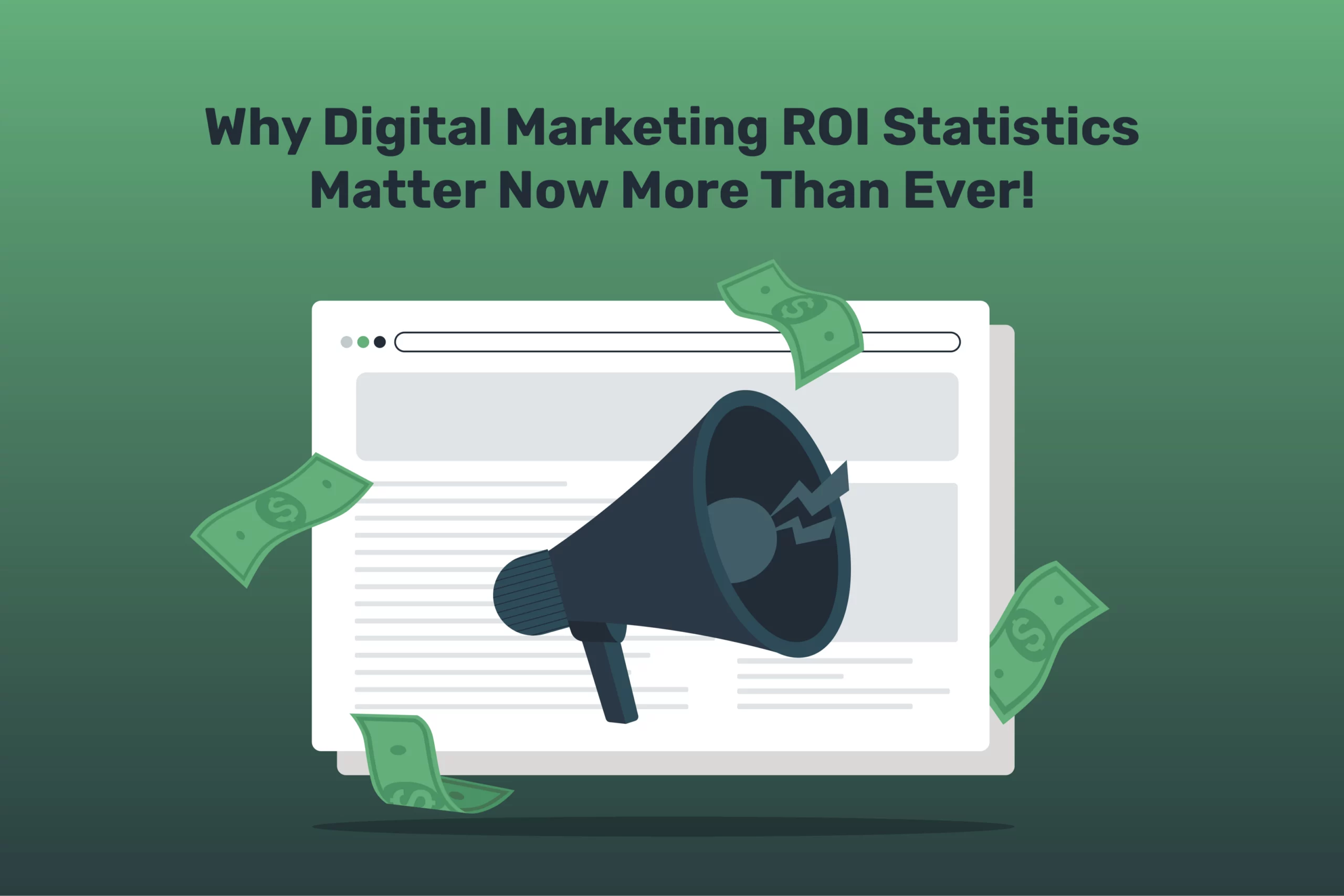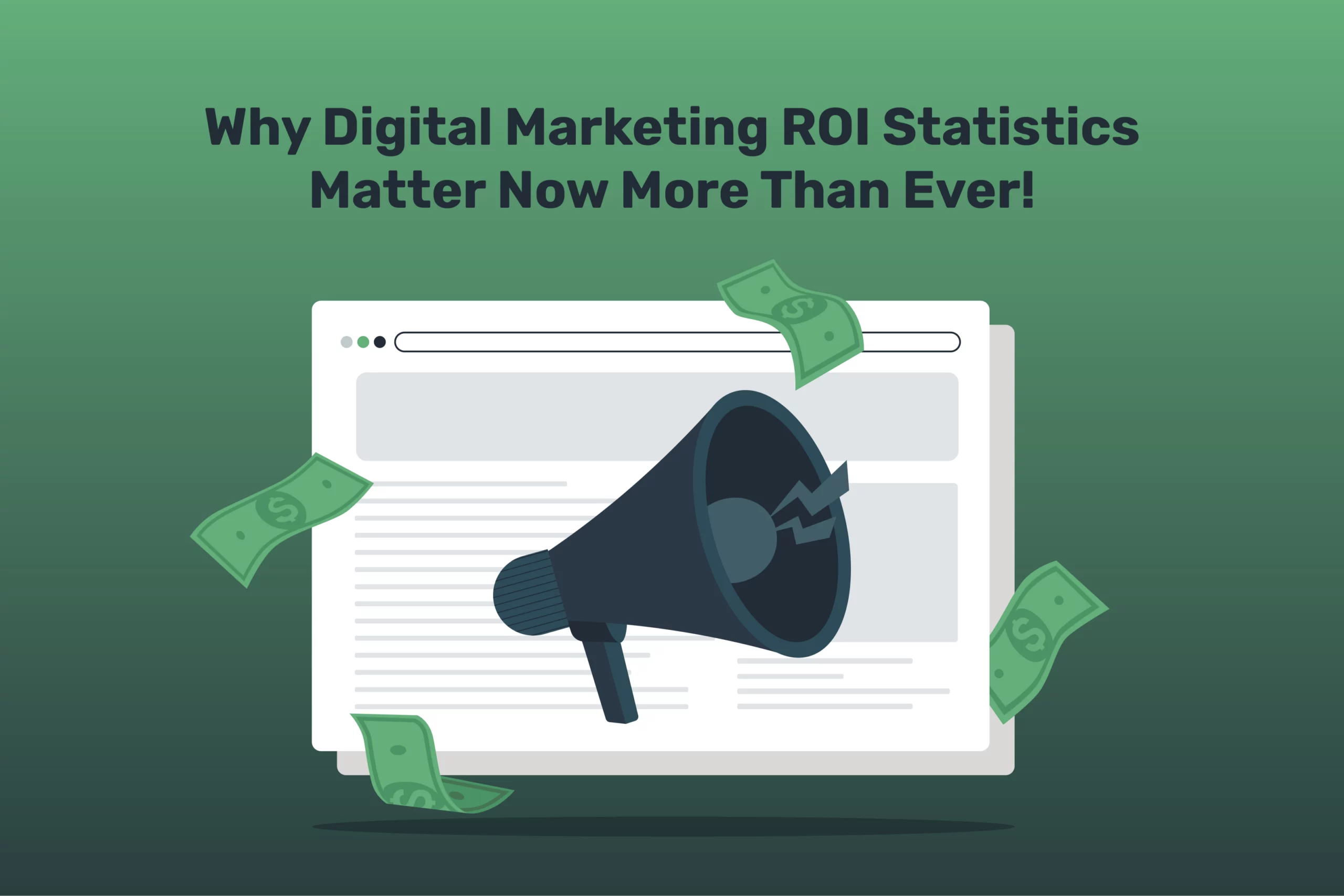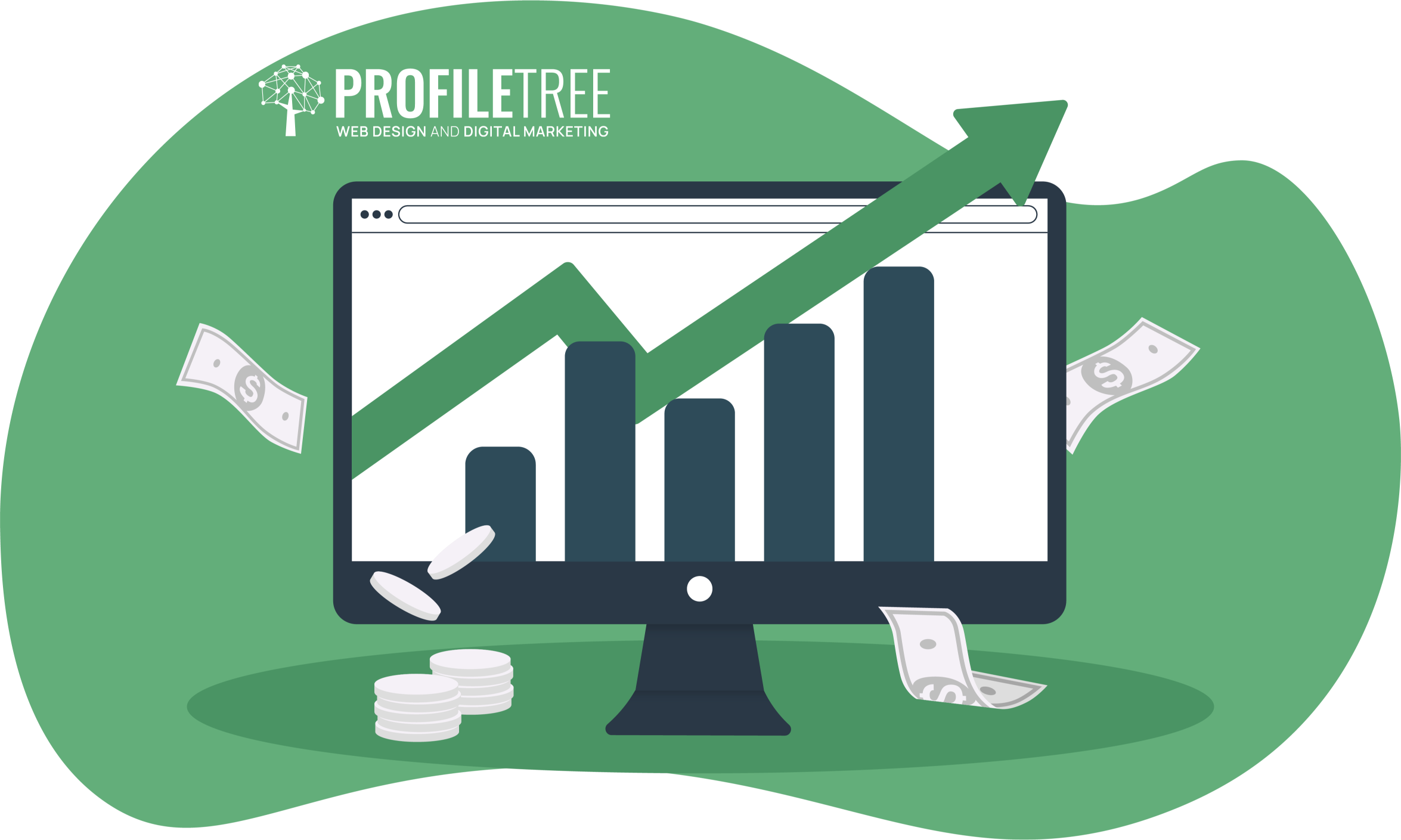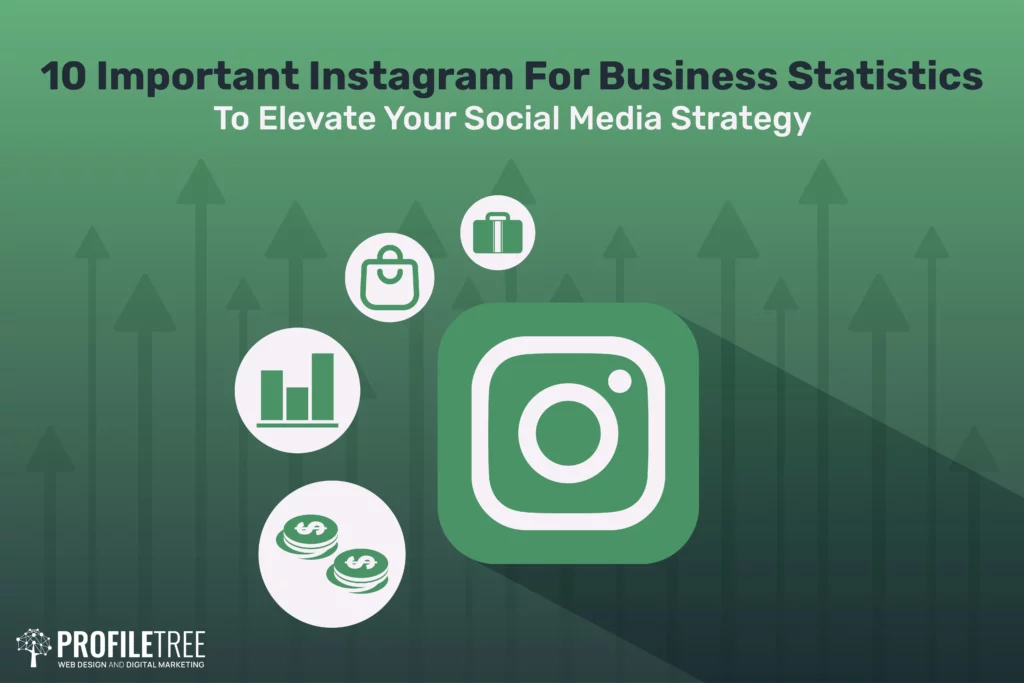Digital marketing can be a bit overwhelming, but understanding the ROI (Return on Investment) statistics can help you determine which strategies are worth investing in. Why should you care about such statistics in the first place, you might ask?
Consider this: in an age saturated with advertising noise, businesses are laser-focused on maximising every marketing pound. They demand concrete evidence that their online campaigns are translating into real results, not just likes and shares but leads, conversions, and, ultimately, revenue. This is where Digital Marketing ROI Statistics become your guiding light. They act as your translator, deciphering the complex language of data and offering clear, actionable insights.
Digital marketing ROI statistics are important for measuring and improving the effectiveness of online marketing campaigns. They help marketers allocate their budget and resources, track and analyse their results, optimise and improve their campaigns, and justify their investments. However, before getting into the statistics, let’s clear some basics first!
What is Digital Marketing ROI?
Digital Marketing ROI (Return on Investment) refers to the measure of the profitability of digital marketing efforts. It is a metric used to evaluate the efficiency and effectiveness of digital marketing campaigns in generating revenue and achieving business goals.
Digital Marketing ROI is calculated by comparing the gains from a digital marketing campaign (such as increased sales, leads, or website traffic) against the costs incurred to execute the campaign (including advertising spend, content creation costs, and marketing technology expenses).

In simpler terms, it’s a metric that evaluates the profitability of your online marketing efforts. It boils down to measuring the revenue or value generated against the amount you invested in digital channels like SEO, PPC, social media, content marketing, and email marketing.
Think of it this way: imagine planting seeds in your garden. You invest time, resources, and care (the “cost”). Your desired outcome? Plump, juicy tomatoes (the “profit” or “value”). Digital Marketing ROI helps you calculate how many tomatoes you harvest per invested hour, revealing the efficiency and effectiveness of your gardening (marketing) efforts.
While ROI might seem like a complex equation reserved for financial wizards, don’t worry! Let’s break it down into bite-sized, easy-to-digest pieces:
Unveiling the Building Blocks
- Net Profit: This refers to the revenue you earn from your campaign minus the costs involved (think ad spend, content creation, etc.). It’s the sweet, ripe tomato you harvest after all your hard work.
- Campaign Cost: This encompasses all the money you invest in your digital marketing activities. It’s the water, sunlight, and fertiliser you provide to your digital “seeds.”
- Advanced ROI: Going beyond basic calculations, this considers factors like brand awareness, customer lifetime value, and long-term impact. It’s like factoring in the intangible benefits of a healthy garden, like attracting pollinators and improving soil quality.
Why Does Digital Marketing ROI Matter?

In digital marketing, Return on Investment (ROI) reigns supreme. But why exactly does understanding your ROI matter so much? It’s not just about bragging rights – it’s about making informed decisions, optimising your budget, and, ultimately, driving success.
Here’s why ROI holds the key to digital marketing mastery:
1. Data-Driven Decision Making
In the past, marketing was often a shot in the dark, relying on hunches and intuition. Thankfully, digital marketing is powered by data. Measuring ROI allows you to quantify the effectiveness of your campaigns, channels, and strategies. This data empowers you to:
- Identify what’s working and what’s not: See which platforms generate the most leads, which content resonates best, and which ads deliver the highest return.
- Allocate resources effectively: Shift your budget from underperforming areas to ones with proven success, maximising your impact.
- Test and iterate: Experiment with different strategies and adjust your approach based on real-time data, continuously improving your campaigns.
2. Justification and Budget Allocation
Marketing isn’t a bottomless pit. Budgets need justification, and ROI provides compelling evidence of value. Whether it’s securing funding from management or convincing clients of your agency’s worth, demonstrating ROI showcases the tangible impact of your digital marketing efforts. This helps:
- Secure the budget you need: Numbers talk louder than words. By presenting clear ROI data, you can advocate for resources that fuel future growth.
- Attract and retain clients: Agencies and freelancers can showcase their expertise and effectiveness by demonstrating the ROI they deliver to their clients.
- Align budget with business goals: Ensure your marketing spend is directly tied to achieving specific business objectives, like increasing sales or brand awareness.
3. Going Beyond Short-Term Gains
While immediate profit is crucial, true ROI considers the long-term impact of your digital marketing efforts. Measuring metrics like:
- Customer Lifetime Value: Tracks the total revenue a customer generates over their relationship with your brand.
- Brand Awareness: Monitors your brand’s reach and reputation, which can lead to future sales and loyalty.
- Customer Engagement: Gauges how actively your audience interacts with your brand, fostering stronger relationships.
By measuring these broader aspects, you gain valuable insights into how your digital marketing efforts are building a sustainable foundation for future success.
4. Measuring Intangibles
Not all benefits fit neatly into financial spreadsheets. Digital marketing can positively impact intangible aspects like:
- Brand Reputation: Building trust and fostering positive brand sentiment.
- Customer Loyalty: Creating strong relationships that lead to repeat business and advocacy.
- Employee Engagement: Effective internal communication and employee advocacy.
While these benefits are harder to quantify directly, they contribute significantly to long-term growth and success. Consider tracking brand mentions, customer reviews, and employee satisfaction alongside your traditional ROI metrics for a more holistic view.
Calculating ROI for Digital Marketing: Unveiling Your Campaign’s Worth!
Understanding your digital marketing ROI (Return on Investment) is crucial for optimising your strategies and maximising budget impact. While the calculation itself might seem simple, the process involves nuances and tailoring based on your campaign goals. Let’s delve into the different ways to calculate ROI for your digital marketing endeavours:
1. Define Your Goals
Before crunching numbers, clearly define your campaign’s objectives. Are you aiming for:
- Increased revenue: Calculate return on ad spend (ROAS) = (Campaign revenue – ad spend) / ad spend) * 100%
- More leads: Calculate cost per lead (CPL) = (Total campaign cost) / (Number of leads generated)
- Enhanced brand awareness: Track metrics like website traffic, social media reach, and brand mentions alongside industry benchmarks.
2. Identify Your Costs
Gather all expenses associated with your campaign, including:
- Ad spend: Paid advertising costs on platforms like Google Ads, Facebook Ads, etc.
- Content creation: Costs associated with developing website content, social media posts, email marketing materials, etc.
- Platform fees: Subscriptions for marketing software, tools, or website analytics platforms.
- Personnel costs: Time spent by your team on managing and executing the campaign.
3. Choose the Right Formula
Once you have defined your goals and identified your costs, select the appropriate formula based on your objectives:
- Basic ROI: For a general overview, use (Net profit from campaign) / (Total campaign cost) * 100%
- Advanced ROI: Consider customer lifetime value and long-term brand impact with formulas like (Customer lifetime value – cost of acquisition) / (cost of acquisition + marketing spend) * 100%
4. Adjust for Intangibles
While ROI primarily focuses on quantifiable metrics, remember to consider intangible benefits like:
- Brand building: Track brand sentiment, social media mentions, and website traffic growth.
- Customer engagement: Monitor metrics like email open rates, social media interactions, and website dwell time.
- Employee morale: Gauge internal communication effectiveness and employee advocacy.
5. Analyse and Adapt
Calculating ROI isn’t a one-time exercise. Regularly track, analyse, and adapt your strategies based on your findings:
- Identify underperforming channels or tactics and reallocate resources to more effective ones.
- Refine your targeting to reach the right audience and increase conversion rates.
- Experiment with different campaign elements and creatives to test what resonates best with your audience.
Digital Marketing ROI Statistics

The digital marketing landscape is constantly evolving, so staying updated on the latest ROI statistics is crucial for optimising your campaigns. Here’s a summary of some recent findings:
Overall Trends
- Growing Importance: Digital marketing ROI is becoming increasingly important for businesses, with studies showing strong connections between effective campaigns and improved financial performance.
- Multi-Channel Approach: Most successful campaigns today utilise a combination of different channels, making it difficult to isolate ROI for each one individually.
- Focus on Long-Term Value: Beyond just immediate sales, understanding the impact on customer lifetime value and long-term brand engagement is gaining traction.
Channel-Specific Statistics
- SEO:
- Average ROI remains strong at 22:1 (HubSpot, 2023).
- Studies emphasise the importance of content quality, technical SEO, and mobile optimisation for high ROI.
- PPC:
- Average ROI is reported around 36% (WordStream, 2023), but varies significantly depending on industry and keyword competition.
- Data-driven keyword research, ad copy optimisation, and landing page conversion rate optimisation are key for maximising ROI.
- Email Marketing:
- Despite evolving consumer habits, email marketing boasts an impressive average ROI of 3,800% (HubSpot, 2023).
- Segmentation, personalisation, and automation continue to be key drivers of high email marketing ROI.
- Social Media Marketing:
- ROI varies greatly depending on the platform, goals, and campaign strategy.
- Measuring ROI beyond immediate sales and focusing on engagement, brand awareness, and community building is becoming increasingly important.
- Content Marketing:
- While average ROI figures can be difficult to pin down, the value of high-quality content for attracting leads, building trust, and fostering long-term customer relationships is widely recognised.
Remember, these statistics are not mere numbers—they are powerful tools. Use them wisely, and you’ll unlock the true potential of your digital marketing efforts, transforming your online presence from a black box into a transparent, ROI-driven success machine.


